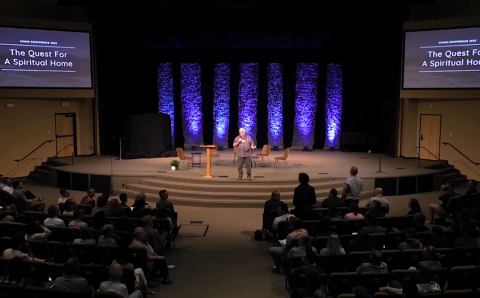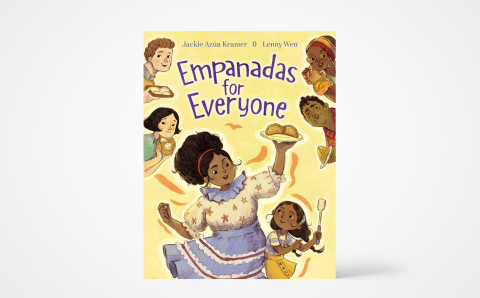Editor’s Note: This is the second in a three-part series about what enduring values have helped hold us together in the Christian Reformed Church and what might continue to hold us together going forward. You can read the first article online at TheBanner.org or in the September issue.
The Christian Reformed “world” of the immigrant era was a network of “complete institutions.” I described this network in my previous article. Immigrant-owned businesses and CRC churches, schools, and magazines fostered a powerful sense of belonging, religiously and ethnically. “In our isolation lies our strength,” Dutch Reformed folk sometimes said.
This isolation was unraveling in the CRC in the United States by the 1950s and in Canada by the 1990s. John Kromminga, soon to be president of Calvin Seminary, wrote about this in 1949. He argued that faithful churches combined with Christian schools and strong ethnic ties had allowed the CRC to retain its Reformed orthodoxy. But what would happen as isolation ended and Dutch Reformed folk in the U.S. became confidently American and increasingly well-off?
In 1955, Kromminga discussed “problems and opportunities in Canada.” The tens of thousands of Dutch Reformed immigrants arriving in Canada would assimilate quickly, he predicted, leaving behind their isolation. But they would become Canadians, not Americans, and appropriately so. Kromminga wondered whether national differences might lead the American and Canadian wings of the church to separate.
CRC leaders in Canada soon did raise questions about whether an American-based denomination could effectively serve people in Canada. Must Canadian congregations send their “quota” money for denominational ministries to Grand Rapids? Or could they direct money to Canadian projects, perhaps in cooperation with other Canadian churches? Should there be American and Canadian national synods in the CRC as well as a general synod? Some American CRC members in turn worried about the impact on “their” church of this new wave of Dutch immigrants, with their unfamiliar ideas and old-world accents.
The end of isolation thus gave CRC leaders reasons to worry. They observed middle-class CRC families, like other Americans, going on vacations and enjoying prosperity. Some were wintering in Florida in their retirement. Would worshiping at non-CRC churches while away from home lead them astray? The CRC developed its conference grounds in 1950 as one response. But would people from distant parts of the United States and Canada come to Michigan to camp? Similarly, worried about its “covenant youth” joining the Boy Scouts and Girl Scouts, the CRC started the Calvinist Cadet Corps for boys and Calvinettes (now GEMS) for girls.
While he saw potential problems coming with assimilation, Kromminga also saw opportunities. He observed, for example, that the CRC might “loom even larger in Canadian life” than in America, as Canadian members would be a larger percentage of the national population than those in the U.S.
Kromminga also played a lead role in organizing the CRC’s centennial celebrations in 1957. Centennial programming told the story of the CRC in North America. The story included the history of Dutch immigration but downplayed ethnicity in favor of emphasizing faithfulness to Reformed orthodoxy. It was designed to encourage CRC congregations to evangelize in their local communities and to have influence in society. But opening to the outside world did not just mean Christian Reformed influence going out. It also meant the world coming in.
‘Going Out’ and ‘Coming In’
An example of the “going out” was Calvin College’s influence on evangelical colleges in the United States and Canada. Calvin’s signature emphasis was and is integrating Christian faith into all areas of study and encouraging graduates to do the same in their lives and work. Its faculty were among the leaders in developing and promoting this approach to higher education and scholarship.
I remember from my own youth an example of the world “coming in.” In 1980 or so, my church in Wellandport, Ont., showed the Focus on the Family film series about parenting and disciplining children. Our parents made teens like me watch it over a succession of Thursday evenings in the nearby Christian school gym. The series, produced by James Dobson’s Focus on the Family organization, was meant to help parents cultivate a strong family life. But why force us kids to watch it? Maybe they wanted us to understand why they disciplined us. All I know is that my friends and I, in the semi-dark gym, did our best to ignore the films.
If adolescent me thought the Dobson series was weird, historian me, in retrospect, sees cultural change happening. Dobson was American, not Dutch or Canadian. He was not Reformed. His roots were Nazarene, in the Wesleyan-Holiness tradition. Good Reformed folk like my parents should have been skeptical of his Arminian theology. Those Thursday nights were signs of the evangelical world coming into the CRC and American culture infiltrating Canada.
My point is that as CRC folk Americanized and Canadianized, they became part of networks of North American Christianity. Those networks gradually replaced historic ties to Dutch churches, seminaries, and universities—ties that were thinning and fading. Fuller Theological Seminary became a more common reference point than the Dutch Reformed seminary in Kampen. My pastor father subscribed to Christianity Today and other American and Canadian magazines with helpful ideas about pastoring and worship. Members of the CRC began to participate in nondenominational missionary and Bible societies, charities, and aid organizations. We became less distinctively Dutch and Reformed and more Canadian, American, and broadly Protestant.
The same was true in all areas of life. Young CRC men in my area played in Dutch Reformed soccer, hockey, and baseball leagues. But we also played local youth baseball, soccer, and hockey. It was not that we turned away from our CRC networks, but that we also participated in other networks. These became “ours” too and more so over time. The CRC increasingly had competition for our money, attention, and time. We had alternatives. Instead of a holistic network of Dutch Reformed institutions, we had layers of institutions from various religious and social networks. The boundaries between “us” and “them” grew porous. And we liked having more choices.
Success in attracting modest numbers of Canadians and Americans to CRC congregations, in turn, brought new ethnic and racial diversity into the denomination. The varied religious backgrounds of these new members—Lutherans, Catholics, Baptists, and more—leavened our Reformed religious culture. Sometimes it was Reformed Christianity that drew them in; other times it was marrying into a CRC family. CRC folk similarly left the fold to join other churches.
It’s not that belonging no longer mattered or even that our loves inevitably changed. It’s more that we came to care about and belong to more networks, institutions, and communities and that our religious and cultural identities no longer reinforced each other in a singular way. Belonging to many communities and networks meant that belonging to any one of them mattered a little less. These changes could be disorienting and upsetting or a breath of fresh air. This kind of transition has not been unique to the Dutch Reformed, but common in many ethno-religious traditions. Belonging becomes flexible, complicated, even fragmented.
This article has focused on ethno-cultural change and its relationship to religious change and belonging—especially belonging to multiple overlapping networks rather than a single “complete” one. The next article in this series will look at growing diversity in the CRC and how social and political trends have changed the idea of belonging in the CRC and other church traditions. It also will suggest what belonging in the CRC might look like going forward.
About the Author
Will Katerberg is a professor of history and curator of Heritage Hall at Calvin University in Grand Rapids, Mich. He is a member of Church of the Servant CRC in Grand Rapids.









